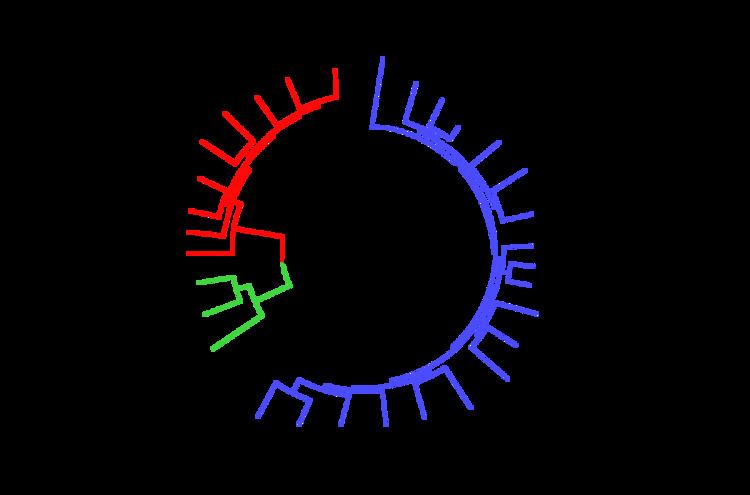 | ||
Mosaic evolution (or modular evolution) is the concept that evolutionary change takes place in some body parts or systems without simultaneous changes in other parts. Another definition is the "evolution of characters at various rates both within and between species".408 Its place in evolutionary theory comes under long-term trends or macroevolution.
By its very nature, the evidence for this idea comes mainly from palaeontology. It is not claimed that this pattern is universal, but there is now a wide range of examples from many different taxa. Some examples:
Background
In the neodarwinist theory of evolution, as postulated by Stephen Jay Gould, there is room for differing development, when a life form matures earlier or later, in shape and size. This is due to allomorphism. Organs develop at differing rhythms, as a creature grows and matures. Thus a "heterochronic clock" has three variants: 1) time, as a straight line; 2) general size, as a curved line; 3) shape, as another curved line.
When a creature is advanced in size, it may develop at a smaller size; alternatively, it may maintain its original size or, if delayed, it may result in a larger sized creature. That is insufficient to understand heterochronic mechanism. Size must be combined with shape, so a creature may retain paedomorphic features if advanced in shape or present recapitulatory appearance when retarded in shape. These names are not very indicative, as past theories of development were very confusing.
A creature in its ontogeny may combine heterochronic features in six vectors, although Gould considers that there is some binding with growth and sexual maturation. A creature may, for example, present some neotenic features and retarded development, resulting in new features derived from an original creature only by regulatory genes. Most novel human features (compared to closely related apes) were of this nature, not implying major change in structural genes, as was classically considered.
